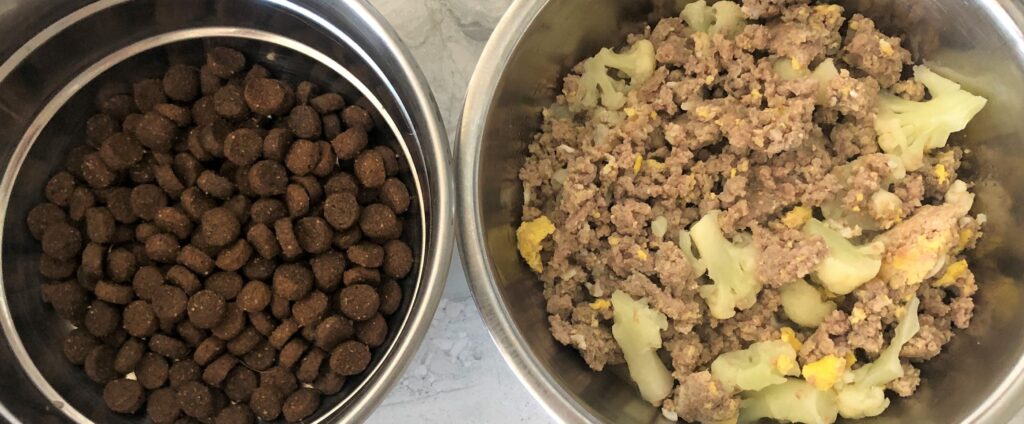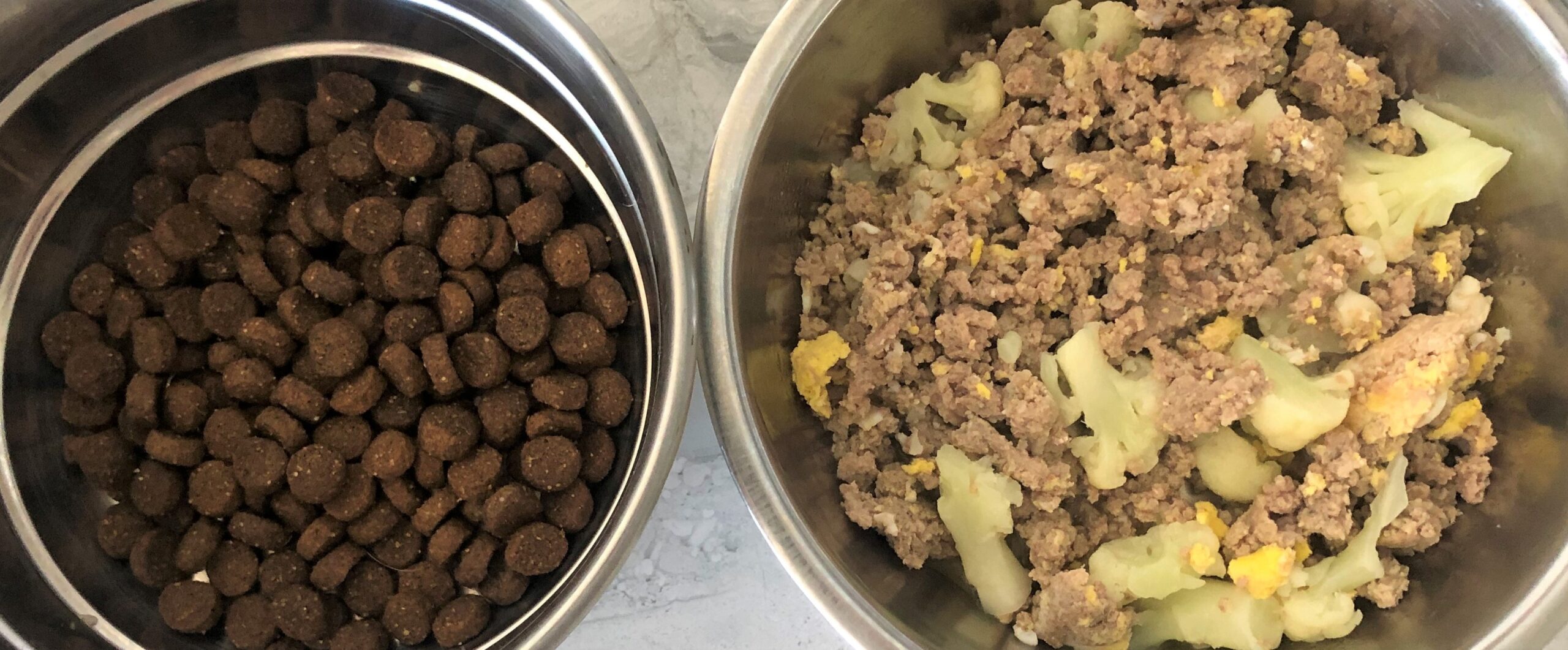When I was working towards my master’s degree in nutrition, I tried to write papers about dog nutrition whenever possible. Below is a section of one of my papers, focusing on the risks of commercial pet food.
You can also listen to the audio version included at the bottom of this article.
If you are ready to feed your dog a truly nourishing diet, visit my Services page for options.
Best to you and your dogs,
Sarah
Sarah Whitman, MS
Founder, Dog Food Coach

Commercial Dog Food – History of trouble. For centuries, dogs have co-evolved with humans as friends, protectors, co-workers and companions. The proverbial man’s best friend has an ancient history of working, lounging, and dining, alongside humans. They only began eating commercial pet foods around the beginning of the 20th century.
Before Commercial Pet Food. Before the pet food industry developed, canines ate the meats, organs, bones, plant matter etc. from their prey. (Think rabbit, squirrel, etc.)
These long-time human companions ate items local humans consumed, including different varieties of meats, vegetables and more. This is REAL food.
That Was Real Food. Now, It’s Fake Food. Now, many kinds of commercial pet foods are artificial, processed beyond recognition.
Nutrients are often stripped off, and sprayed back on in artificial versions. Artificial colors and flavors are added to increase palatability, and often questionable ingredients are combined into a fully processed product.
With this new industry comes a new set of risks.
Chemicals. Accidental incorporation of chemicals can occur. For example, in 2007, laboratories in New York found the drug aminopterin in their tested pet foods. That same year, a massive recall occurred when melamine, an industrial chemical, was incorporated into pet food, resulting in numerous deaths. More recently, in 2018, several items were recalled due to presence of the euthanasia drug pentobarbital. This is a result of euthanized animals being mixed into pet food.
By-Products. Commercial pet foods also often contain ingredients rejected from the human food supply. An example includes “4D” meats – meats from dead, dying, diseased or disabled animals. Other items rejected from the human food supply but used in pet food include grain middlings, peanut shells, corn stalks and mill sweepings.
Cross-Contamination. Here, harmful substances work their way into food through manufacturing equipment or other means. After the 2007 melamine recall, for example, additional pet foods were recalled due to potential cross-contamination from equipment used during the melamine-contamination period.
Mislabeling. This has been an issue in commercial pet food. Studies have found certain ingredients were included in formulas, but not mentioned on the label, thereby posing a risk to dogs with specific sensitivities.
A dog guardian may purchase a specific food with certain ingredients in mind, but the reality is that the contents are different from what is on the label. This solves nothing and helps nobody,
The Safest Solution = Real Food, Once Again. The human food supply not perfect, but food accepted into the human food supply requires closer inspection, higher quality and stricter standards than pet food.
It is up to pet owners to take control of their companion animals’ health, and one way to do this is by serving food with less risk of contamination and other problems.
Listen to the audio version of this topic, A History of Trouble.

